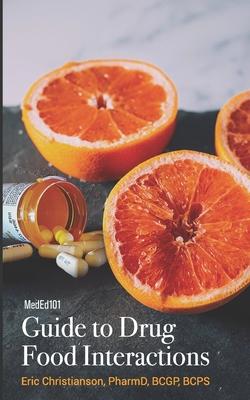This is the perfect book for clinical rounds and internships! Take a look at some of our favorite testimonials.
- "The size of the book is handy. Easy to find what you're looking for in table of contents or the index. Use it to check dietary considerations as an RDN."
- "Very helpful resource. Use frequently as a clinical dietitian. The clinical pearls are especially useful and provide information not available in other FDI resources."
- "This is a wonderful comprehensive look at the interactions between medications and food. This is a very important topic and not addressed enough so I applaud the author in taking time to write this essential reference."
- "As a dual background pharmacist (pharmacy and nutrition), I am very much impressed by this book. This is a concise, practical and handy reference that every pharmacist should read from time to time."
Key Features
- Over 500 of the most commonly used medications in practice
- Food and diet information relevant to each medication
- Information as applicable on how each medication may alter supplements, vitamins, minerals, diet, and nutrition in general
- Common and notable adverse effects are listed for complete patient monitoring
- Common uses and drug class are noted for each medication
- Monitoring parameters are included for each medication
- Mechanism of action is also included for each medication to help students prepare for pharmacology courses
- Relevant clinical practice pearls are also included as applicable to each medication
- Conveniently alphabetized by generic name with alphabetical brand names indexed by page number at the back of the book
Food can significantly alter the concentrations of some medications. Alternatively, medications can contribute to nutritional deficiencies and other dietary complications. In this reference book, we lay out over 500 of the most commonly used medications and how they impact diet or how diet can alter the effects of drugs. This guide is designed to highlight important food and drug interactions with the most commonly used medications in clinical practice. In addition to highlighting potential food medication interactions, we have also laid out common adverse effects, indications, clinical pearls, mechanisms of action, and monitoring parameters that are critical for each medication. This is meant to be a reference for healthcare professionals and students who work in healthcare like dietitians, pharmacists, nurses, nurse practitioners, physicians, physician assistants, and others.
